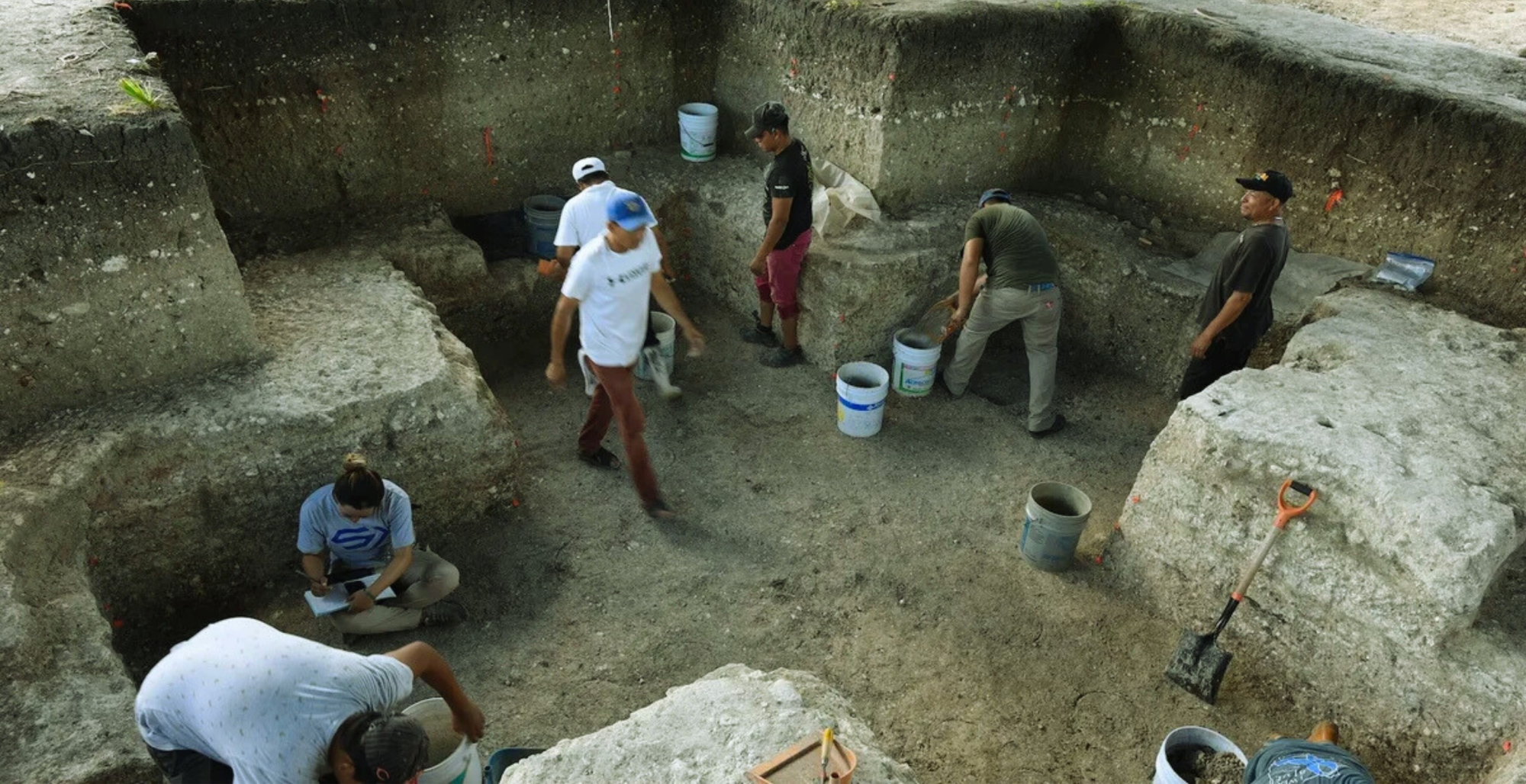Copyright VICE

Archaeologists have uncovered a 3,000-year-old Maya site so massive it can be seen from space. According to a new study, it wasn’t a city at all. It was a map of the universe. Known as Aguada Fénix, the site stretches nearly six miles across Tabasco, Mexico, and dates back to around 1050 B.C. Researchers describe it as a cosmogram, a sort of blueprint for how ancient people believed the cosmos was arranged. “They probably thought the universe is ordered according to the north-south and east-west axes,” said lead author Takeshi Inomata, an archaeologist at the University of Arizona, in an email to Live Science. “The east-west axis was tied to the movement of the sun and was probably related to the passage of time.” Videos by VICE Using lidar scans, the team found a network of canals, causeways, and dams that intersect in giant cross patterns. At the center sits a ceremonial area called an E Group, filled with symbolic offerings, like greenstone ornaments carved to resemble a crocodile, a bird, and what may be a woman giving birth. The design aligns with sunrise positions connected to a 260-day cycle—the same sacred calendar later used by the Maya and Aztec. Archaeologists Think This 3,000-Year-Old Maya Site Might Be a Giant Map of the Universe The layout and labor are staggering. The entire structure, published this week in Science Advances, rivals later Maya cities like Tikal or Teotihuacan in scale. Yet there’s no evidence of kings, palaces, or a ruling elite. The absence of hierarchy suggests the site was built through cooperation rather than coercion. Inomata’s team estimates more than a thousand people participated, likely as part of communal rituals that involved feasting, trade, and matchmaking. The researchers believe the massive construction reflected a collective worldview rather than a political one. “All this monumentality was built collectively rather than under the direction of powerful rulers,” said archaeologist James Aimers of SUNY Geneseo. Other scholars, like David Stuart of the University of Texas, praised the study’s “careful and meticulous analysis,” while some, such as Michael Smith of Arizona State University, urged more clarity on what qualifies as a cosmogram. Even if the site’s exact purpose is debated, Aguada Fénix may rewrite the story of early Maya civilization. It suggests that some of humanity’s first monumental projects weren’t born from empires but from people trying to give shape and meaning to the universe.



